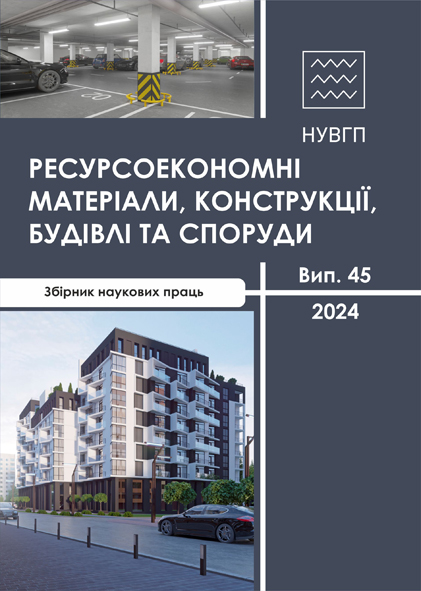MODELS FOR DETERMINATION BEARING CAPACITY OF REINFORCED CONCRETE BEAMS BY INCLINED SECTIONS
DOI:
https://doi.org/10.31713/budres.v0i45.30Abstract
The methods of calculating bearing capacity of flexural reinforced concrete structures in inclined sections and the stages of their development and improvement are analyzed. The classic "truss analogy", its modifications, "arch analogy", "strut-tie" and "disc-link" models are considered. Factors established in the author's research that affect the bearing capacity of structures and the resistance of their constituent members are given. The first group includes factors whose influence has been studied in detail, namely: type and class of concrete, class and intensity of shear reinforcement, effective depth of the cross-section, inner lever arm, shear projection c, angle of inclination θ of strut. The second group includes dowel effect in longitudinal reinforcement, engagement along the banks of an inclined crack, scale factor, the quantitative influence of which, especially when they are combined, has not been clearly established. The factors of the first group are taken into account in the design dependencies of the various country’s norms. The expediency of introducing additional parameters of the inclined section into the design dependencies is indicate. These include the height of the compressed concrete above the dangerous inclined crack at the place of application of the concentrated load, the angle of the wedge of the wedge-shaped zone and the length of the projection of the inclined crack c0, which is unambiguously set by the value c. The problem of the resistance of a truncated concrete wedge loaded beyond the truncation edge by longitudinal compressive and shear forces was solved at the National University “Yuri Kondratyuk Poltava Polytechnic”. Wedge models a compressed zone above a dangerous inclined crack. The theory of plasticity, variational calculation, and the principle of virtual velocities are applied. The value of the limit forces corresponds to the minimum power of plastic strain localized in a thin layer on the shear surface.

